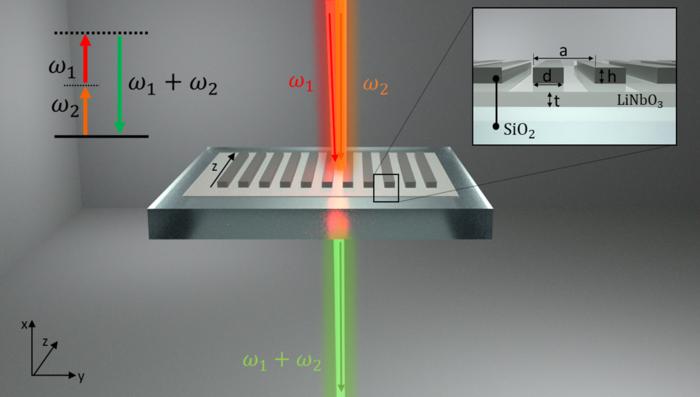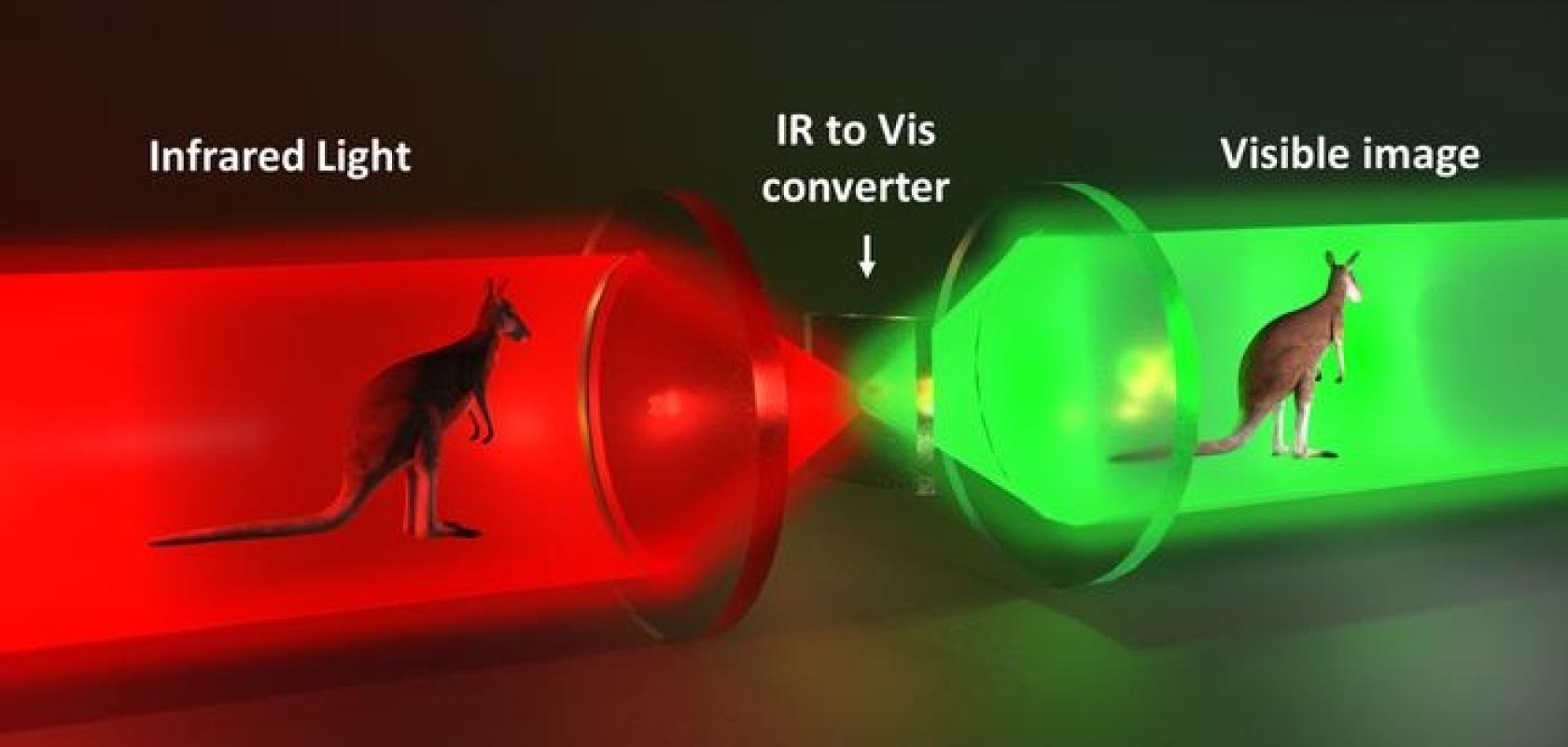Researchers have created an infrared metasurface that could make night vision technology lighter and less bulky, and therefore more accessible for a variety of applications.
The night vision filter weighs less than a gram and can sit as a film across a pair of traditional glasses, allowing users to view the infrared and visible light spectrum at the same time.
Developed at the Australian National University, the technology works through high efficiency up-conversion imaging of infrared to visible, whereby no conversion of electrons is needed – instead, the metasurface enhances the energy of the photons, drawing them into the visible light spectrum. This was achieved for the first time by the researchers.
The research could open up new opportunities for surveillance, autonomous navigation, and biological imaging, for example, in addition to improving the safety of nightime drivers or workers operating in low-light conditions, where bulky and often uncomfortable headlamps are required.
Traditional night vision requires cooling, blocks out visible light
Traditional night vision technology requires infrared photons to pass through a lens, then encounter a photocathode that transforms these photons into electrons, which then pass through a microchannel plate to increase the number of electrons generated. These electrons, which travel through a phosphor screen to be reconverted back to photons, produce an intensified visible image that can be seen by eye (figure 1). These elements require cryogenic cooling to prevent thermal noise from also being intensified.
These types of high-quality night vision systems are heavy and bulky, and often block the visible light.
Figure 1: Diagram of traditional night vision set up (image: Laura Valencia Molina, Australian National University)
The Australian team’s enhanced infrared vision non-linear upconversion technology uses a non-local lithium niobate metasurface. It requires fewer elements, drastically reducing its footprint.
In this set-up, photons pass through a single resonant metasurface where they are mixed with a pump beam (figure 2). The resonant metasurface enhances the energy of the photons, drawing them into the visible light spectrum – no conversion of electrons needed. It also works at room temperature, eliminating the need for bulky and heavy cooling systems.

Figure 2: Diagram of metasurface-based infrared upconversion set up (image: Laura Valencia Molina, Australian National University)
By using up-conversion technology, imaging systems can capture both the visible and non-visible in one image. Traditional infrared and visible imaging systems cannot produce identical images, as they capture images from each spectrum side-by-side.
The work is an improvement on the researchers’ original technology, which featured a gallium arsenide metasurface. Their new metasurface is made from lithium niobate, which is fully transparent in the visible range, making it far more efficient. In addition, the photon beam is spread over a wider surface area, limiting angular loss of data.
“People have said that high efficiency up-conversion of infrared to visible is impossible because of the amount of information not collected due to the angular loss that is inherent in non-local metasurfaces,” said Laura Valencia Molina, lead author of a study recently published in Advanced Materials. “We overcome these limitations and experimentally demonstrate high efficiency image up-conversion.”
Author Rocio Camacho Morales added: “This is the first demonstration of high resolution up-conversion imaging from 1,550nm infrared to visible 550nm light in a non-local metasurface. We choose these wavelengths because 1550 nm, an infrared light, is commonly used for telecommunications, and 550 nm is visible light to which human eyes are highly sensitive. Future research will include expanding the range of wavelengths the device is sensitive to, aiming to obtain broadband IR imaging, as well as exploring image processing, including edge detection.”


